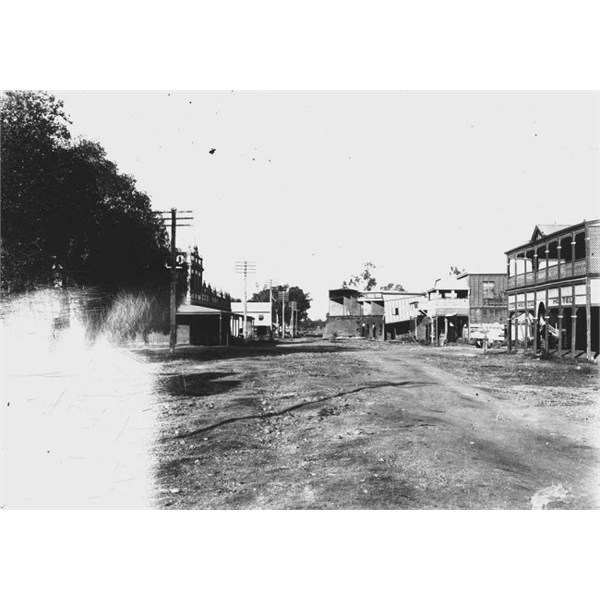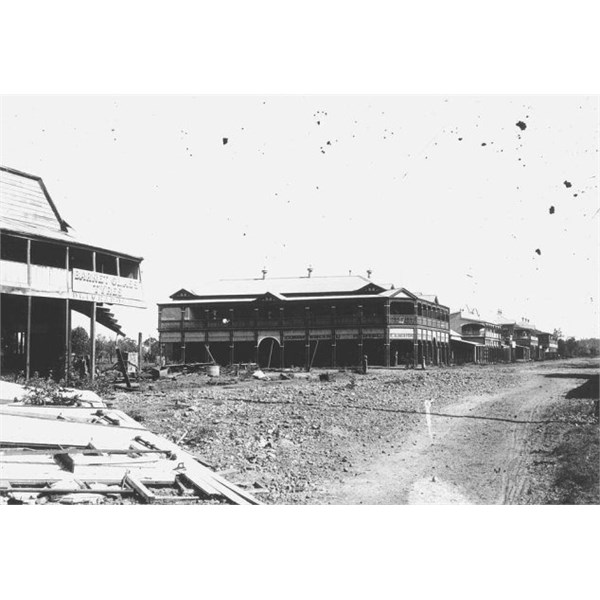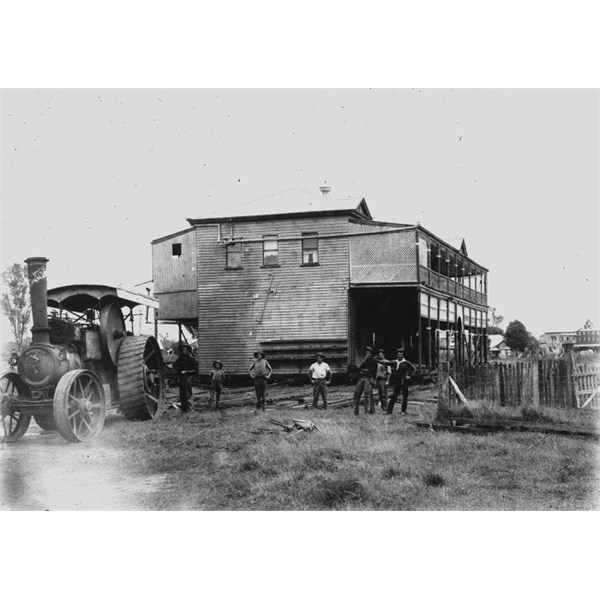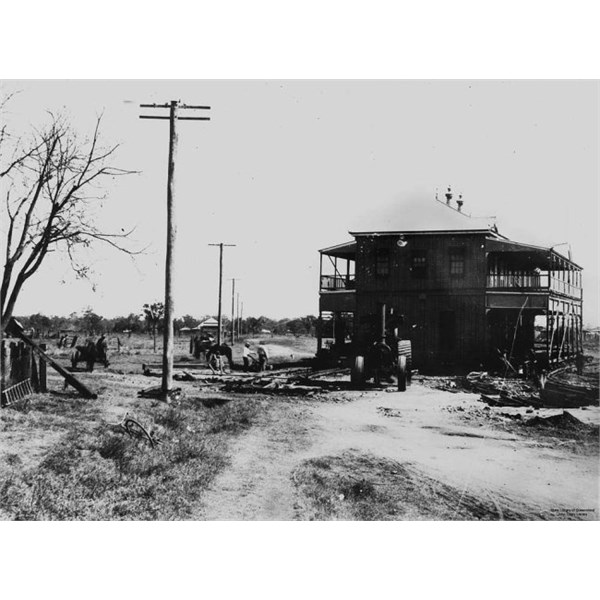Take a drive 3 and a half hours south west of Mackay along the
Peak Downs Highway and you’ll find yourself in the township of
Clermont.

Early view of Clermont 1870.

Looking east along Drummond Street, Clermont, after the 1916 flood

Looking west along Drummond Street, Clermont, after the 1916 flood
Ludwig Leichhardt was the first European to pass through the
Clermont area in 1845, but it was the discovery of gold in 1861 that was responsible for the establishment of the town. The town reserve was proclaimed on 25 March 1864, although a gold field was declared in the area in 1862.
Clermont is named after
Clermont-Ferrand in France;
Clermont-Ferrand was the ancestral home of Oscar de Satge, one of the ?rst European grazier who owned the Wolfang Downs pastoral run.
The town was originally established on low lying ground next to a
lagoon or
billabong, but flooding was always a problem, with four substantial floods occurring between 1864 and 1896. The greatest flood, in 1916, killed 65 people out of a town
population of 1,500 and remains one of Australia's worst natural disasters in terms of life lost. Following the 1916 flood, many of the wooden buildings of the town were moved using steam traction engines to a new townsite on higher ground. A local amateur photographer, George Pullar took numerous photographs of the moving buildings, published in the 1980s as "A Shifting Town".

Commercial Hotel on Drummond Street, Clermont, after the 1916 flood

Federal Hotel in ruins, Clermont, 1916

Flood damaged houses at Clermont, 1916
Theresa
Creek Post Office opened by 1863, was replaced by Coppermines
Post Office at the end of 1863 and
Clermont Post Office in 1864.
Copper was discovered soon after. In the 1880s up to 4000 Chinese people were resident in
Clermont, mining for gold and copper. This led to racial riots and the Chinese were removed from the region in 1888.
The railway was extended north from
Emerald to
Clermont in February 1884. However, no passenger trains are available to or from
Clermont.
Like most regional communities
Clermont has history. The town was founded in 1862 on the banks of Hood’s
Lagoon after the discovery of Gold in the Region.
In 1916 the town was struck by one of the worst floods in Australian history, destroying the towns business hub and taking the lives of 65 people.
Gordon Cumming Pullar a local businessman from the region amassed a portfolio of glass-plate images that document
Clermont and its people. Many of these images thankfully survived the floods and record in detail the devastation along with events that followed.
In 1917 the decision was made to move the few surviving hotels and stores to higher ground. This is why
Clermont is often referred to as “the town that moved” or the “shifting town”.

Commercial Hotel, Clermont, being winched to higher ground after the 1916 flood

Leo Hotel, Clermont, Queensland being removed after the 1916 flood
Only a few of the buildings that were moved still stand today. Among the buildings that remain is the Commercial hotel pictured above. The images above show the Hotels being winched by a traction engine to new locations.

Memorial marking the 1916 flood
Residents of the central Queensland town of
Clermont remember the devastating floods of 1916 that claimed the lives of more than 65 people.
Link to ABC report
LINK
.